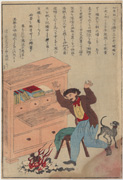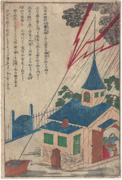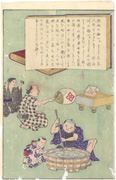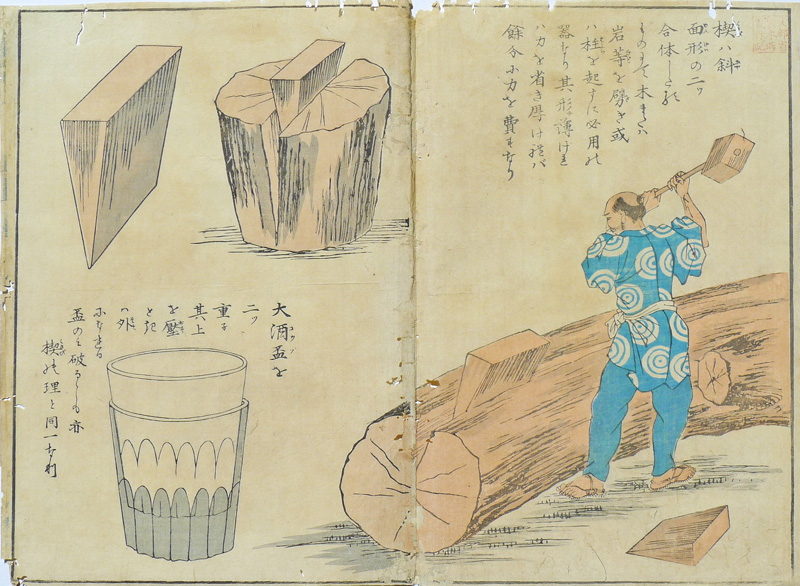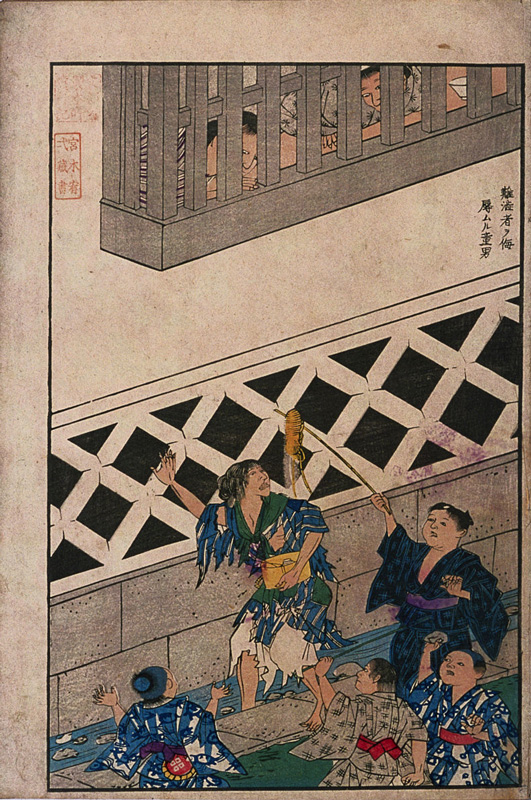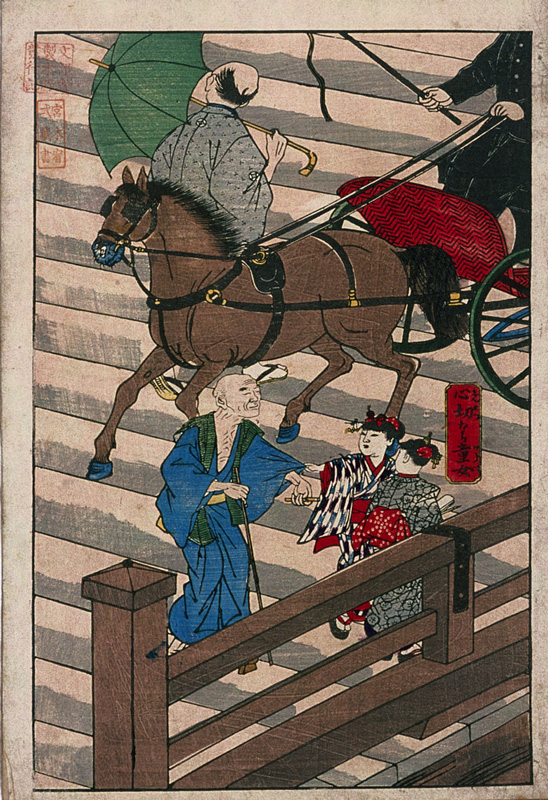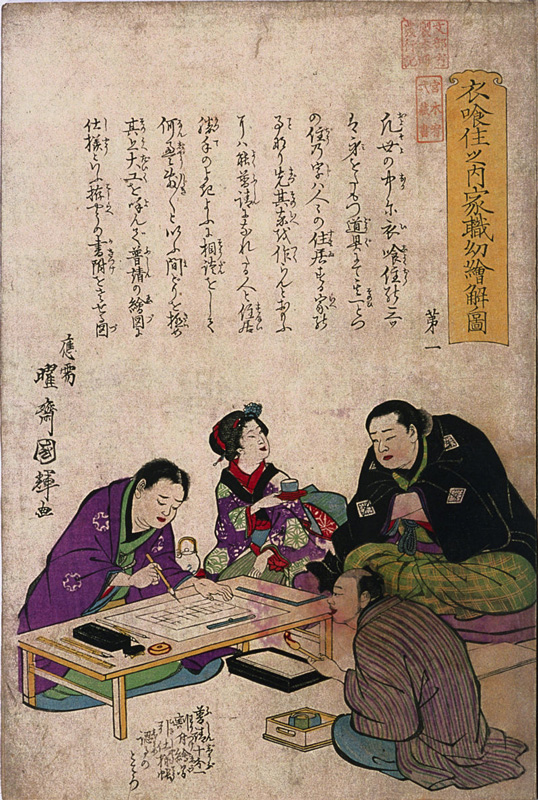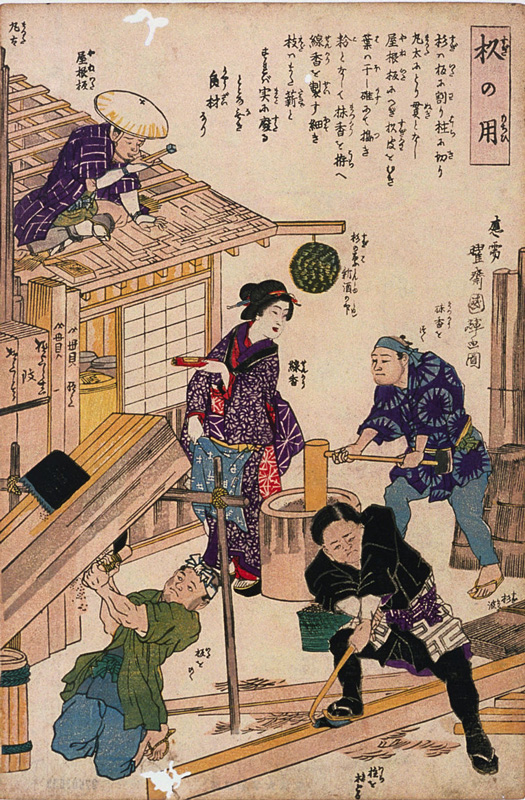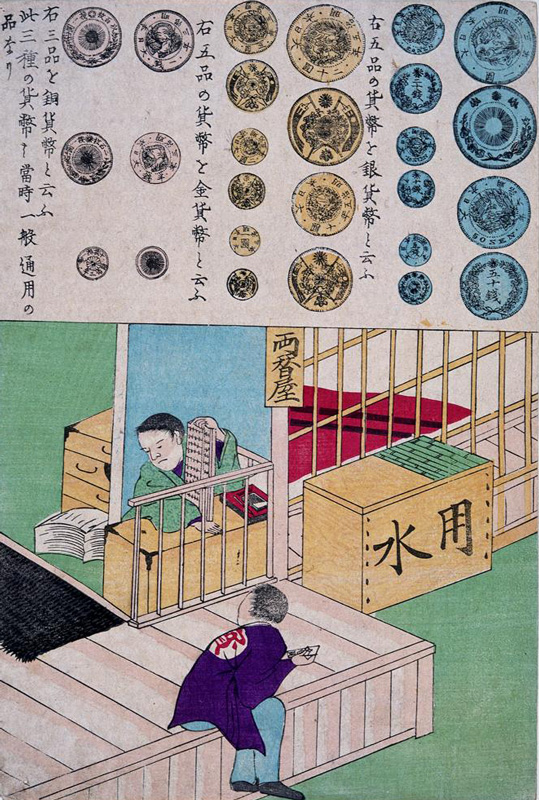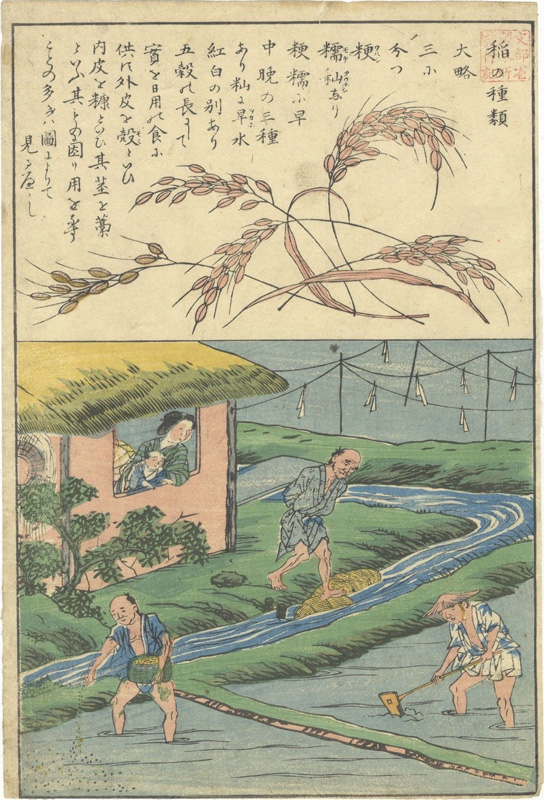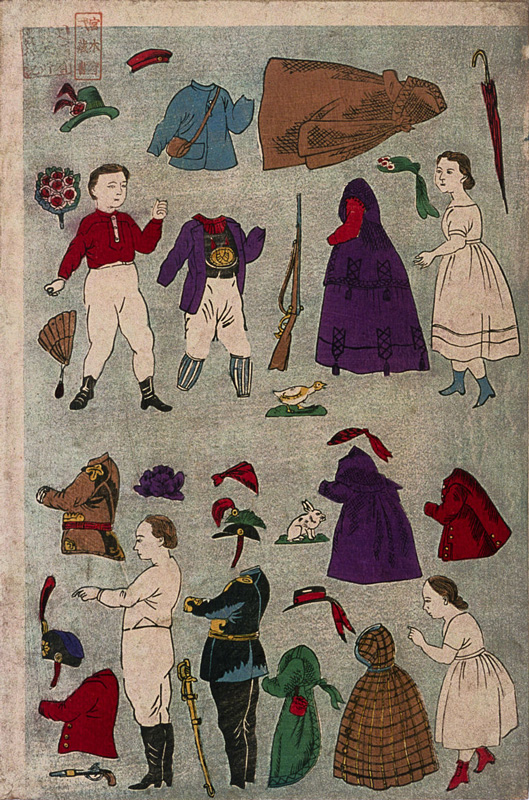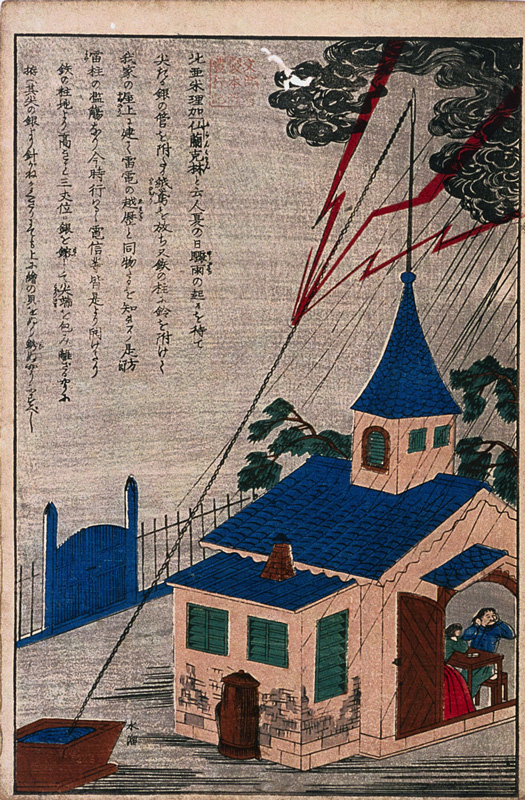Pilferer
from the series
Little Child's Pictures for Home Entertainment, 1873
(attributed to the school of
Utagawa Kuniteru II)
IHL Cat. #617
Young Boys' Rough Behavior
from the series
Little Child's Pictures for Home Entertainment, 1873
(attributed to the school of
Utagawa Kuniteru II)
IHL Cat. #2058
A Boy Who Likes to Fight
from the series
Little Child's Pictures for Home Entertainment, 1873
(attributed to the school of
Utagawa Kuniteru II)
IHL Cat. #2170
Good Girls Showing Concern
from the series
Little Child's Pictures for Home Entertainment, 1873
(attributed to the school of
Utagawa Kuniteru II)
IHL Cat. #2059
Utagawa Kuniteru II)
Rice Storage
from an untitled series on
the Rice Plant
(attributed to the school of
Utagawa Kuniteru II)
IHL Cat. #633
| [Principles and Applications of the] Wheel and Axle from an untitled series of prints on Mechanics (attributed to the school of Utagawa Kuniteru II) IHL Cat. #765 | [Principles and Applications of the] Lever from an untitled series on Mechanics (attributed to the school of Utagawa Kuniteru II) IHL Cat. #766 | [Principles and Applications of the] Wedge from an untitled series of prints on Mechanics (attributed to the school of Utagawa Kuniteru II) IHL Cat. #767 |
Utagawa Kuniteru II)
Utagawa Kuniteru II)Benjamin Franklin
from the series Legends of
Great Westerners
(attributed to the school of
Utagawa Kuniteru II)
IHL Cat. #2054
IHL Cat. #2311
Designing and Planning a House
[Housing - until completion of Framework]
稲 稲の種類
Types of Rice Plants
[Food]
Origin of Subject Matter
The subject matter for many of the prints has been linked to the Chinese translation of “Chambers’sInformation for the People", 1842 by William and Robert Chambers, (essentially an encyclopedia)6, and Nakamura Masanao’s Saikoku rishi hen 西国立志編, a translation of Samuel Smiles 1859 "Self-Help With Illustrations of Character and Conduct".7
The Artist(s)
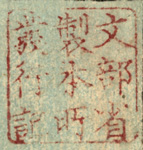 The prints often, but not always, carry the seal of the Ministry of Education (Monbushō) reading 文部省製本所発行記 (Ministry of Education Publication). (See image to the left.) The prints often, but not always, carry the seal of the Ministry of Education (Monbushō) reading 文部省製本所発行記 (Ministry of Education Publication). (See image to the left.)Most of the prints do not carry a signature, but 30 prints are signed 国輝 Kuniteru [ Utagawa Kuniteru II (1830-1874)] and those not carrying a signature are attributed to “disciples of Utagawa Kuniteru” or “the studio Utagawa Kuniteru” or “the school of Kuniteru.” It is reasonably argued that while the signature of the well-known Utagawa school artist Kuniteru on prints would enhance their popular appeal, the signatures of his lesser known disciples would add little value to the print.8 |
Resources for Additional Information
“A Study of ‘The Full Color Prints issued by the Ministry ofEducation’ in Meiji Era Japan”, Okano Motoko https://core.ac.uk/download/pdf/56631724.pdf
Sainsbury Institute for the Study of Japanese Arts and Cultures, “Pedagogic polychrome nishiki-e prints published by the Ministry of Education,” Hirano Akira, appearing in E-magazine, issue 16.http://sainsbury-institute.org/support-us/e-magazine-issue-16/treasures-of-the-library/
"Raising Subjects: TheRepresentation of Children and Childhood in Meiji Japan," RhiannonPaget an article from New Voices: A Journal for Emerging Scholars of Japanese Studies inAustralia and New Zealand, Volume 4, 2011.
https://newvoices.org.au/volume-4/raising-subjects-the-representation-of-children-and-childhood-in-meiji-japan/
University of Tsukuba Library: Educational Color Woodblock Prints http://www.tulips.tsukuba.ac.jp/pub/kichosho/kyoiku-nishikie-eng.html
Kumon Museum of Children's Ukiyo-ehttps://www.kumon-ukiyoe.jp/en/
“A Study on the Ideological Background about the Media Policy of Visual Education in Early Meiji Era,” Takako FURUYA, University of Tokyo, 2006
https://ci.nii.ac.jp/els/contentscinii_20190112080251.pdf?id=ART0008387827
https://ci.nii.ac.jp/els/contentscinii_20190112080257.pdf?id=ART0008391923
University of Tsukuba Library Kyoiku Nishikie (The Full Color Prints issued by the Ministry of Education)
http://www.tulips.tsukuba.ac.jp/lib/ja/collection/rare-kyoiku-nishikie
1 "Pedagogic polychrome nishiki-e prints published by the Ministry of Education" by Hirano Akira - Sainsbury Institute for the Study of Japanese Arts and Cultures, University of East Anglia http://sainsbury-institute.org/support-us/e-magazine-issue-16/treasures-of-the-library/
2 ibid.
3 “A Study of ‘The Full Color Prints issued by the Ministry of Education’ in Meiji Era Japan”, Okano Motoko, p.4 https://core.ac.uk/download/pdf/56631724.pdf
4 "Raising Subjects: The Representation of Children and Childhood in Meiji Japan," Rhiannon Paget an article from New Voices: A Journal for Emerging Scholars of Japanese Studies in Australia and New Zealand, Volume 4, 2011. https://newvoices.org.au/volume-4/raising-subjects-the-representation-of-children-and-childhood-in-meiji-japan/
5 Paget points out that it is unknown whether this was the wholesale, re-sale or end consumer price.
6 The Japanese translation of this work, Hyakka zensho, was not published until 1876.
7 Nakamura Masanao 中村正直 (1832-1891), was a proponent of education for women and children and served as the first principal of the Tokyo Girl’s School (Tokyo Joshi Shihan Gakko).
8 op. cit. Okano Motoko
last revision:
1/17/2019
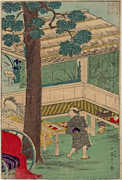
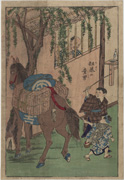
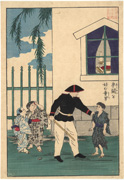
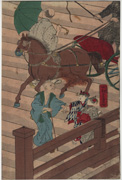
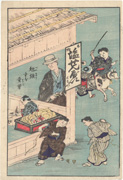
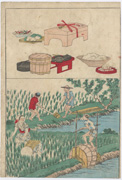
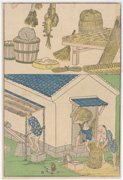
![[Principles and Applications of the] Wheel and Axle from an untitled series of prints on Mechanics](../artists/utagawa-kuniteru-ii-1830-1874/The Wheel and Axle ihl765 thumb web.jpg)
![[Principles and Applications of the] Lever from an untitled series on Mechanics](../artists/utagawa-kuniteru-ii-1830-1874/Levers ihl766 thumb web.jpg)
![[Principles and Applications of the] Wedge from an untitled series of prints on Mechanics](../artists/utagawa-kuniteru-ii-1830-1874/Wedges ihl767 thumb web.jpg)
